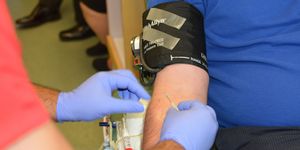Shape-shifting Material Innovates Technology

A study recently published in the journal Science Advances explains how engineers at the University of Colorado have developed new material that is capable of morphing “complex, pre-programmed shapes” using light and temperature stimulus leading to a literal square peg to transform into a round hole before returning into its original shape.
"The ability to form materials that can repeatedly oscillate back and forth between two independent shapes by exposing them to light will open up a wide range of new applications and approaches to areas such as additive manufacturing, robotics, and biomaterials," explains senior of the study, Christopher Bowman, as well as distinguished Professor in CU Boulder's Department of Chemical and Biological Engineering (CHBE).
Such shape-shifting material could prove useful for many applications in “manufacturing, robotics, biomedical devices and artificial muscles”. Prior to the study, many engineers and scientists have utilized a broad range of physical mechanisms to change and alter “an object's size, shape or texture with programmable stimuli”.
Unfortunately, such efforts have not been successful since these materials are known to be limited in size or extent and often irreversible to change back to original form. The newly developed material will utilize liquid crystal elastomers (LCEs) to readily program 2-way transformations on the macroscopic level which is the same technology behind television displays. Additionally, the molecular arrangements of LCEs allow it to be susceptible to dynamic change through heart and light.
Overall, the new material’s ability to change and revert back provides a broad range of applications for the future particularly for increasing the flexibility and adaptability of biomedical devices.
"We view this as an elegant foundational system for transforming an object's properties," explains the lead author of the study, Matthew McBride, as well as a post-doctoral researcher in CHBE. "We plan to continue optimizing and exploring the possibilities of this technology."
Source: The University of Colorado at Boulder








